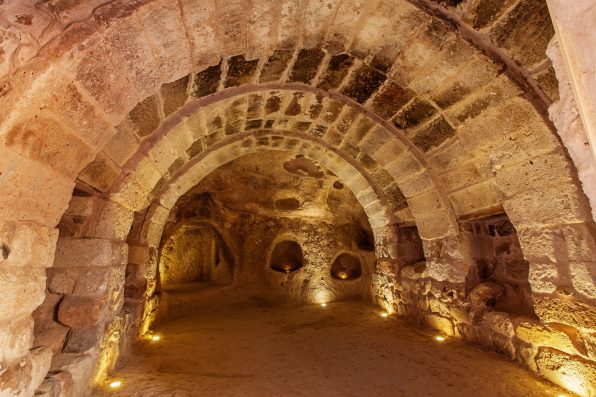Beneath Rome, there are ancient burial grounds in dim tunnels that once contained the remains of the earliest Christians. They are known as the Catacomb Saints.
Their skeletons were meticulously adorned with gold, precious gems, and fine fabrics before being displayed in churches throughout Europe.
This practice served as a powerful reaffirmation of faith and highlighted the sacrifice that early Christian martyrs made in order for their religion to finally be accepted.
The catacombs of Rome are ancient underground sacred burial sites dating back to the beginning years of Christianity. From the start, followers of Christ suffered greatly.
They experienced persecution, exile, martyrdom, and more. As the religion spread, the catacombs became the final resting place for devout followers and the people who had died for their faith.
In the 16th century, the Catholic Church went through a series of attacks known as the Great Iconoclasm. They were led by Calvinist Protestant crowds who destroyed religious imagery, causing many valuable relics of the Catholic Church to be lost forever.
After such attacks, the Catholic Church sought to restore people’s faith by making use of Rome’s underground catacombs in 1578.
Catholic officials found skeletons entombed in the catacombs. The remains were believed to be those of martyrs, but most of them likely belonged to some of Rome’s early Christian citizens.
The bones were exhumed and transported to towns and churches across Europe. The Catholic Church went to great lengths to decorate the remains, as they were viewed as tangible connections to the church’s past.

Sign up for Chip Chick’s newsletter and get stories like this delivered to your inbox.


